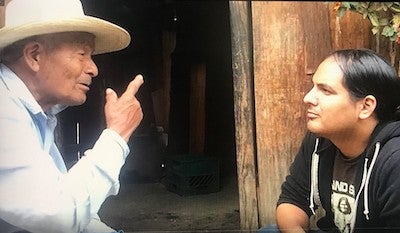Our faculty engage in cutting-edge research and innovative creative work, bringing new ideas to our students and communities locally and globally. We’re pleased to continue this spotlight series featuring our faculty’s work through a question-and-answer style article.
Featured faculty member: Dr. Niku T’arhechu T’arhesi, Multicultural Postdoctoral Fellow in Indigenous Studies of the Americas, Department of Sociology and Anthropology
Q: Please describe your research interests and passions.
A. In a broad sense, I am interested in finding a solution to a longstanding question: what is language? I approach that question by studying how language works at the cognitive, grammatical, and interactional levels. In other words, I explore how people’s grammar and speech affect their thoughts and the role of grammar in peoples’ everyday interactions. To those ends, I have worked on P’urhépecha, a Mesoamerican language unrelated to any other language. In my fieldsite in Cheran, Michoacan, Mexico, the P’urhépecha language is endangered. Most people under 45 cannot speak it or understand it. Given that dynamic, I developed an adjacent research interest in documenting languages on the verge of extinction and helping individuals and communities learn and sustain their language.
While thinking about ways to tackle language endangerment, I realized that I could help do my part by building on my lifelong passion for animated cartoons. I am in the process of creating a few animated cartoon series in the P’urhépecha language that will help provide children with examples of P’urhépecha speech.
What research projects are you currently working on?
My current project examines spatial language and sociality among the P’urhépecha. By spatial language, I mean the parts of speech people use to find and locate people, places, and things. I focus on spatial language’s cognitive and social effects among P’urhépecha speakers. For instance, one pervasive set of spatial language exhibits an underlying pattern I refer to as part-whole. As English speakers, we commonly encounter part-whole relationships such as a slice of pizza to the whole pizza, and intuitively understand it. However, I would argue that for P’urhépecha language speakers, a part-whole pattern is a model for various aspects of culture, especially relationships between people.
For those reading or engaging with your work, what do you hope is the main takeaway?
There is more to language than our own everyday taken for granted grammar and speech habits.

